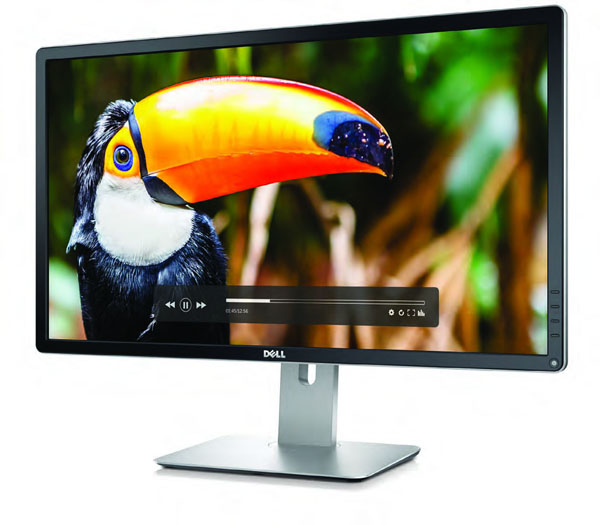Dell P2815Q 28-Inch 4K Ultra HD Monitor Review
Putting a 4K monitor on your desktop means either spending four figures on a 32-inch IGZO screen or going on the cheap with one of the new 28-inch TN-based models. We already reviewed Asus’ PB287Q. Today we look at Dell’s version, the P2815Q.
Why you can trust Tom's Hardware
Dell P2815Q: 4K On The Cheap (With A Caveat)
Ever since Ultra HD monitors appeared about a year ago, value-minded enthusiasts have been waiting for an affordable solution. The market is slowly responding with 28-inch TN panels all based on the same part from Chi Mei Optoelectronics. Like the high-priced IGZO and IPS 4K monitors, it represents a compromise. If you’re shopping for more pixels, just remember this: high resolution, high performance, low price – pick two.
The perfect screen isn’t available yet. The expensive models offer large size and professional features in an IPS format, but still cost around $2000. The $500 displays have to settle for a TN panel and business-class performance. And don’t forget the size factor. A 28-inch monitor is large for sure, but with 157 pixels-per-inch, Windows text and icons are really tiny. Heck, they’re barely big enough on a 32-inch screen.
If you’re considering one of the new value Ultra HD monitors, your choices right now are the Asus PB287Q, Samsung U28D590D, Planar IX2850, Phillips 288P6LJEB or Dell P2815Q. They’re all based on the same TN panel, so performance should be similar. We reviewed the Asus already and found this to be true. Evaluations of the other two products should be coming soon. But where Dell departs from the rest is that its maximum refresh rate is 30Hz, while the others can hit 60.
For that reason, you have to decide exactly what you want your 4K monitor to do. Its color accuracy is excellent even without calibration. It offers contrast comparable to business-class QHD screens. And it sports solid build quality. It’s a fine monitor for productivity, although you’ll probably need to use Windows DPI scaling to improve readability. And by the way, Microsoft, could you please improve the font handling of your flagship operating system? Monitor resolution is going to keep increasing, and it’s getting harder and harder to use Windows as pixel densities top 150 ppi. Thank you.
If gaming is a priority for you, then the P2815Q is not suitable. Not only is the 30Hz limitation an obstacle, but so is the extreme input lag. After playing Watch Dogs on an Asus ROG Swift, it was quite a shock to give up G-Sync and the almost non-existent input lag of that monitor.
The one entertainment discipline that Dell masters is movie-watching. Refresh rate is not an issue when a film is showing at 24FPS. And since the scaling from 1920x1080 to Ultra HD is so good, image clarity is top-notch. If your computer use revolves around video editing, the P2815Q makes an excellent choice.
Ultimately, we find ourselves in conflict over the P2815Q. It’s a really good monitor in every way except for the low refresh rate and high input lag. The panel is certainly responsive, so it seems to come down to Dell’s choice of scaler. We don’t know the specific part used, but it’s obviously a different one than the competition. Perhaps that problem can be solved in a future upgrade.
Get Tom's Hardware's best news and in-depth reviews, straight to your inbox.
We’re happy to see display manufacturers working to lower the price of Ultra HD screens. The process never happens as fast as we’d like, but progress is being made. For now, our wish list remains the same: Ultra HD at 60Hz in a 32-inch screen with accurate color and low input lag. If you're in the same boat, then our wait continues.
Current page: Dell P2815Q: 4K On The Cheap (With A Caveat)
Prev Page Results: Viewing Angles And Uniformity
Christian Eberle is a Contributing Editor for Tom's Hardware US. He's a veteran reviewer of A/V equipment, specializing in monitors. Christian began his obsession with tech when he built his first PC in 1991, a 286 running DOS 3.0 at a blazing 12MHz. In 2006, he undertook training from the Imaging Science Foundation in video calibration and testing and thus started a passion for precise imaging that persists to this day. He is also a professional musician with a degree from the New England Conservatory as a classical bassoonist which he used to good effect as a performer with the West Point Army Band from 1987 to 2013. He enjoys watching movies and listening to high-end audio in his custom-built home theater and can be seen riding trails near his home on a race-ready ICE VTX recumbent trike. Christian enjoys the endless summer in Florida where he lives with his wife and Chihuahua and plays with orchestras around the state.
